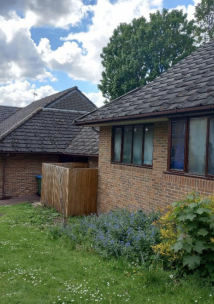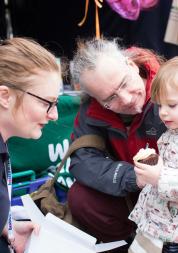Enter and View Report: Samuel Close 1

The purpose of our visit
We’re carrying out a series of visits to learning disability care homes, supported living, and respite facilities in Greenwich to understand the quality of life, and views of those using the service and the experience and perceptions of relatives and carers.
The Health and Social Care Act 2012 allows local Healthwatch authorised representatives to observe service delivery at providers across a range of health and social care services such as hospitals, GPs, and care homes.
Enter and View visits can happen if people tell us there is a problem with a service. They can also occur when services have a good reputation, so we can learn about and share examples of good practice from the perspective of people who experience the service first hand.
Through the programme we help providers to identify what is working well with services and where they could be improved.
How does it work?
Our trained staff and volunteers visit a Greenwich health and social care service. We then spend time at the location, talking both to people receiving care and those providing it.
After our visit, we analyse all the feedback that we have collected and write a report which is published on our website. We share our reports with the organisations involved, the local commissioner, the CQC, and with Healthwatch England.
To protect the safety of service users and staff, we conduct risk assessments and DBS check all our staff and volunteers.
Executive summary
Samuel Close 1 is a care home in a secluded and quiet area, close to public transport. It has 6 bedrooms and currently has 4 residents. The care home is a purpose-built, one-story building designed to accommodate residents with mobility issues. On the day of our visit, we experienced the daily life and activities of residents. We also had the opportunity to talk to staff and interview family members about their relative’s care. Using the PORT1 Tool, we made key observations about each resident’s well-being, including their interactions with staff. Residents showed trust in their care workers, smiling and enthusiastically playing with them during different activities. Families also expressed their satisfaction with this care, saying that they felt “…the staff could not do any better”. Residents can enjoy a range of activities, including painting, football and watching films. If residents don’t want to take part in an activity, care workers quickly provide them with an alternative, tailoring support to their individual needs and interests. Residents are also given the option to take part in activities outside the care home, including visiting neighbouring care homes to meet with friends. One of the highlights of our visit was seeing the commitment of the management and support staff to the personal care of residents, paying close attention to their hygiene and oral health.
Recommendations
1. Complaints information to be on display and available in the reception area.
2. Establish a regular method for group communication and feedback with families, such as a newsletter and group meetings.
3. Review the support offered by POhWER advocates to ensure that is more consistent and better aligned with residents' best interests. POhWER should enhance engagement and improve communication to deliver continuity of care.
